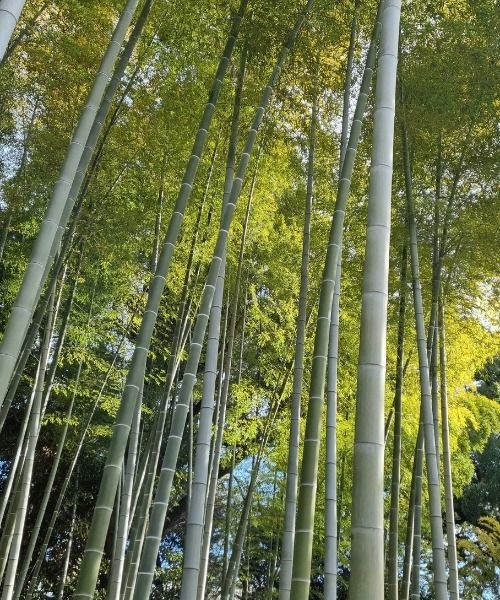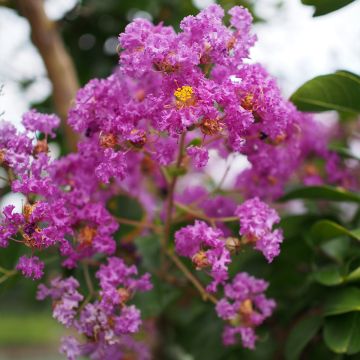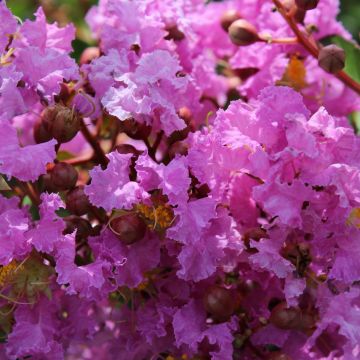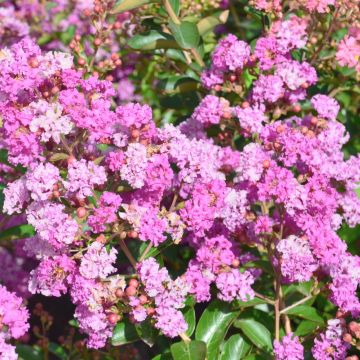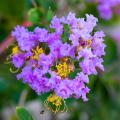Blue Crape Myrtle
Does this plant fit my garden? Set up your Plantfit profile →
Available in 2 sizes
Available in 1 sizes
Available in 1 sizes
Available in 1 sizes
Available in 1 sizes
Available in 3 sizes
Available in 1 sizes
Available in 1 sizes
Available in 1 sizes
The blue colour is rare in Crape Myrtle, indeed almost mythical, but some shades of mauve come close, notably in the Lagerstroemia Cordon Bleu with its blue-lavender clusters. Depending on the variety, the crape myrtle forms a small tree capable of reaching 4-5 m (13-16ft) in height and 3.5 m (11ft) in width, similar to the Lagerstroemia indica Violacea with pale and bright mauve flowers that fade to bluish tints. For small gardens and cultivation in large pots or containers, the choice is now vast in every colour: see e.g. Summer Beauty Centennial. The excellent series of Black Solitaire (Black Diamond) offers the gorgeous Lavender Lace for lovers of dark foliage. Young lagerstroemia must be protected from the cold, while adults can withstand temperatures as low as -15 °C depending on the cultivars. In this area, horticulturists have developed varieties that are more or less early and hardy, and more adapted to cool climates. These shrubs generally have a bushy habit, growing in clumps, but they can easily be shaped through pruning to form a small tree on a stem or a single trunk. In addition to its sumptuous summer flowering, Crape Myrtle also offers beautiful autumn foliage and decorative bark.
Haven't found what you were looking for?






































